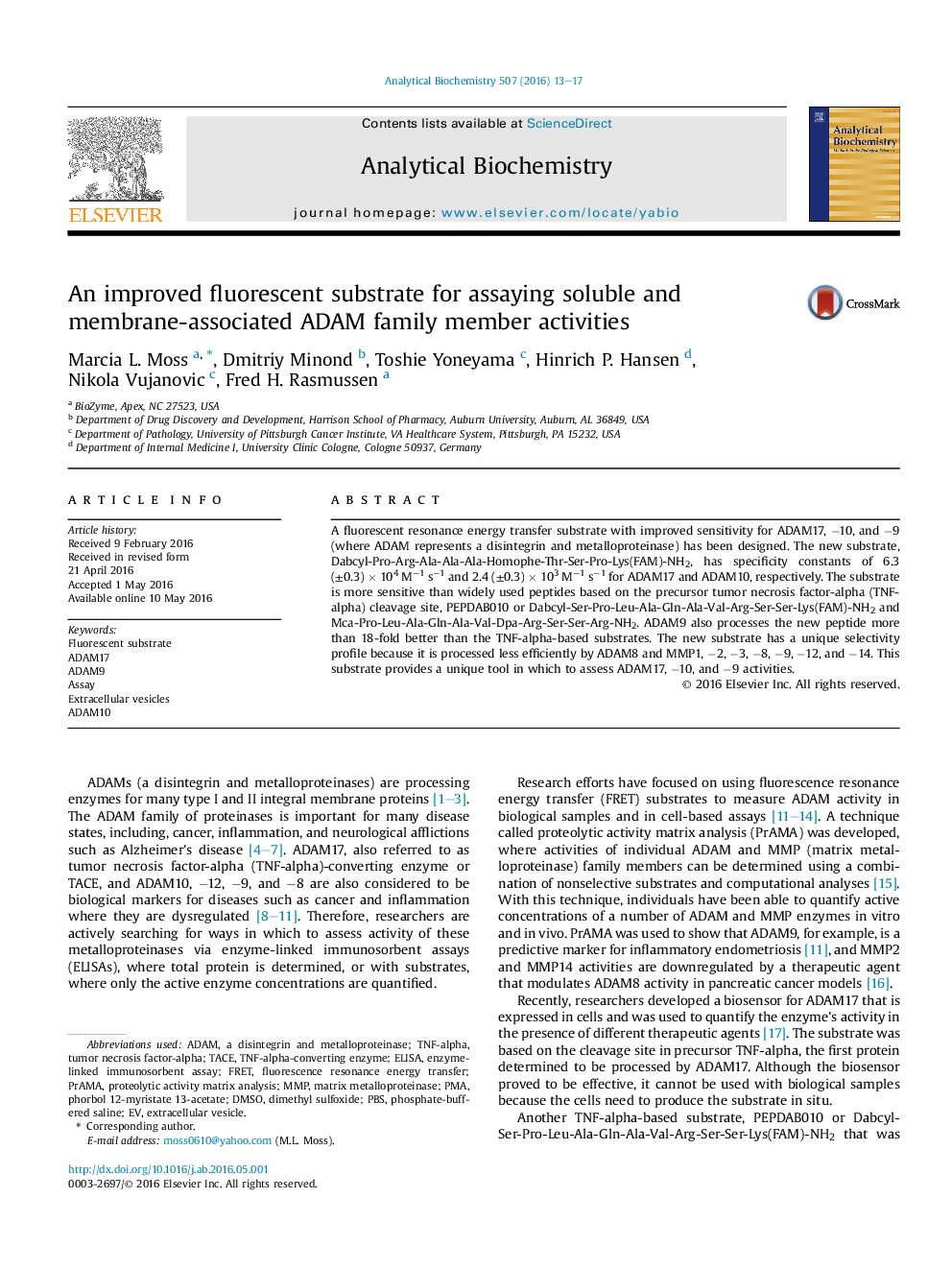| Article ID | Journal | Published Year | Pages | File Type |
|---|---|---|---|---|
| 1172676 | Analytical Biochemistry | 2016 | 5 Pages |
A fluorescent resonance energy transfer substrate with improved sensitivity for ADAM17, −10, and −9 (where ADAM represents a disintegrin and metalloproteinase) has been designed. The new substrate, Dabcyl-Pro-Arg-Ala-Ala-Ala-Homophe-Thr-Ser-Pro-Lys(FAM)-NH2, has specificity constants of 6.3 (±0.3) × 104 M−1 s−1 and 2.4 (±0.3) × 103 M−1 s−1 for ADAM17 and ADAM10, respectively. The substrate is more sensitive than widely used peptides based on the precursor tumor necrosis factor-alpha (TNF-alpha) cleavage site, PEPDAB010 or Dabcyl-Ser-Pro-Leu-Ala-Gln-Ala-Val-Arg-Ser-Ser-Lys(FAM)-NH2 and Mca-Pro-Leu-Ala-Gln-Ala-Val-Dpa-Arg-Ser-Ser-Arg-NH2. ADAM9 also processes the new peptide more than 18-fold better than the TNF-alpha-based substrates. The new substrate has a unique selectivity profile because it is processed less efficiently by ADAM8 and MMP1, −2, −3, −8, −9, −12, and −14. This substrate provides a unique tool in which to assess ADAM17, −10, and −9 activities.
